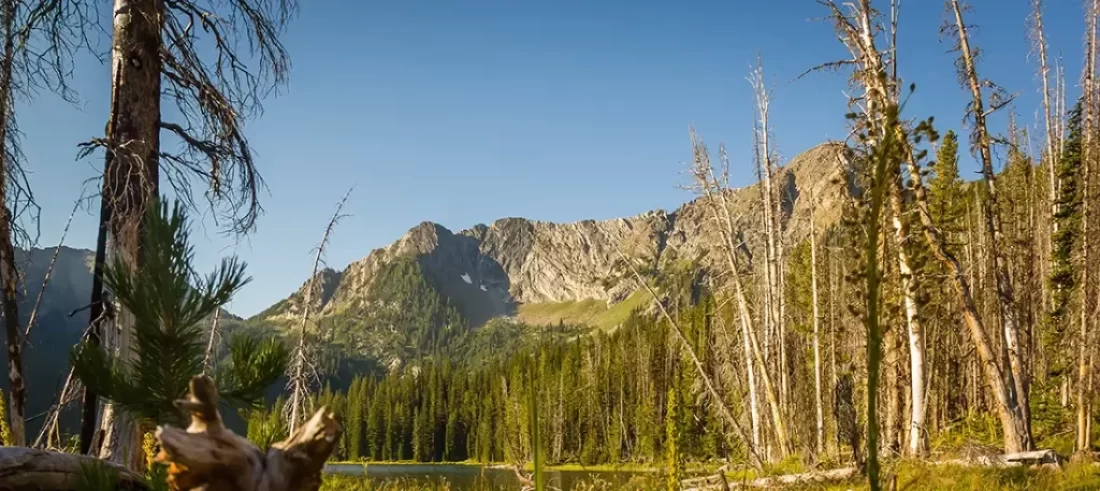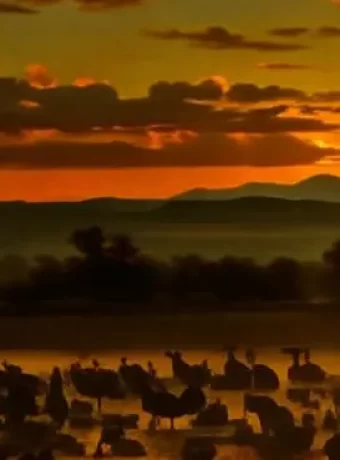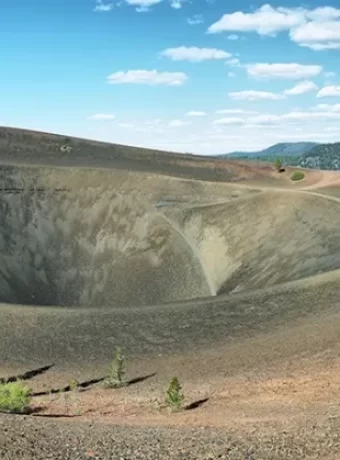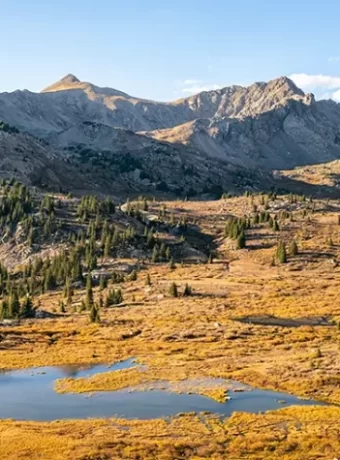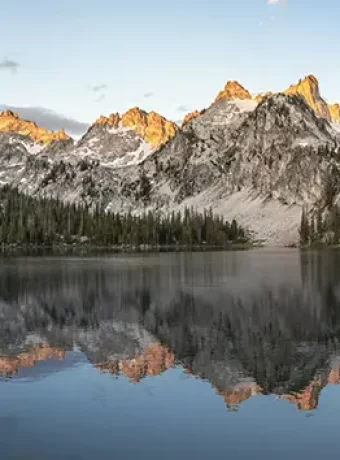Explore Anaconda-Pintler Wilderness: History, Fly Fishing, and Top 10 Trails
Have you ever wanted to experience a place seemingly untouched by time? The Anaconda-Pintler Wilderness in southwestern Montana offers just that. This article explores the History of the Anaconda-Pintler Wilderness and Top 10 Hiking Trails, revealing a landscape rich in both natural beauty and human history.
This protected area is more than just scenic views. It’s a living history book, showcasing nature’s resilience and the story of human impact. The History of the Anaconda-Pintler Wilderness and the Top 10 Hiking Trails are intertwined, reflecting a changing relationship with the land.
Table of Contents
The Deep Roots of the Anaconda-Pintler Wilderness
Long before European settlement, Native American tribes like the Shoshone, Bannock, and Nez Perce thrived in this region. They lived in harmony with the land. The wilderness area holds archaeological evidence of their presence.
This evidence includes teepee rings, ancient rock art, and tools. These remnants reveal that this land was not just a passageway, but a cherished home.
Exploration, Settlement, and the Changing Landscape
The early 1800s marked the arrival of European explorers. Figures like Lewis and Clark passed nearby. Fur trappers, seeking valuable resources, ventured into the mountains.
The construction of the Mullan Road in the 1860s facilitated increased settlement. Towns like Anaconda and Philipsburg emerged. This marked a significant transformation for the area.
The Industrial Imprint on the History of the Anaconda-Pintler Wilderness and Top 10 Hiking Trails
Industry, particularly copper mining, left a profound impact. The Anaconda Copper Mining Company became a dominant force. This period saw extensive logging and resource extraction.
Railroads and sawmills further altered the wilderness. The landscape changed because of this.
Preservation Efforts: A Shift in Values of Montanans
The mid-20th century witnessed a growing emphasis on conservation. The concern really got a foothold during this time. It was really supported during this time.
The U.S. Forest Service played a crucial role. The establishment of the Anaconda-Pintler Wilderness in 1964 protected 158,615 acres.
The Wilderness Act of 1964 reinforced this protection. Subsequent additions have expanded the wilderness area to approximately 240,000 acres, providing a vast and diverse landscape for generations to enjoy. You can really tell they care about the land.

Outdoor Hiking Fly Fishing Apparel
Outdoor performance apparel in a UPF-50 Graphic Hoodies, Sun protective Gloves with a stripping guard, great for hiking and photography. Graphic Patterned Leggings that dry fast for wading streams fly fishing, moisture wicking on the trail.
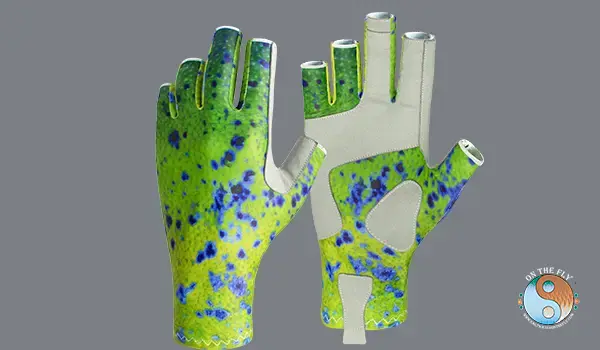
Sun Protective Hiking Gloves
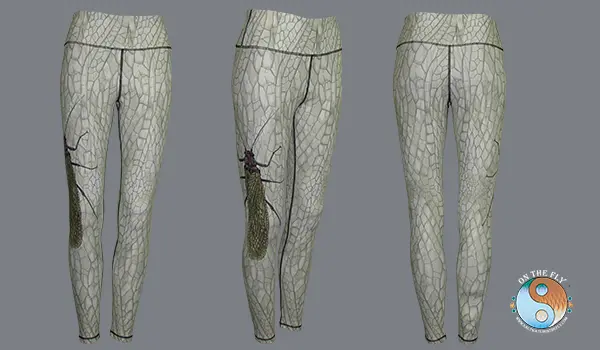
Graphic Leggings for River or Trail, Even Out for Dinner
History of the Anaconda-Pintler Wilderness and Top 10 Hiking Trails
Anaconda-Pintler Wilderness provides a chance to disconnect from modern life. You will reconnect with nature in over 240,000 acres of unspoiled terrain. Here are ten trails to explore:
Hiking Alice-Took-Trail
The Alice-Took-Trail is a popular choice in the Anaconda-Pintler Wilderness. This trail stretches about 12.5 miles. It features a hefty 2,500 feet of elevation gain. This makes it a solid pick for those seeking a bit of a challenge. It is considered moderate to difficult.
Trail Details
- Length: 12 miles (19.3 km) round trip
- Elevation Gain: 2,500 feet (762 meters)
- Difficulty: Moderate to challenging
- Trail Type: Out and back
- Usage: Hiking, backpacking, horseback riding
Trail Description
The trail begins at the Alice-took-Trailhead, located at the end of a dirt road. The first 2 miles (3.2 km) of the trail follow a gentle slope through a mixed conifer forest, passing by several small streams and meadows. As you climb higher, the terrain becomes steeper and rockier, with scenic vistas of the surrounding peaks.
At the 4-mile (6.4 km) mark, you’ll reach a scenic overlook with stunning views of the Anaconda-Pintler Wilderness. Take a break and enjoy the views before continuing on to the trail’s highest point, a saddle at 9,500 feet (2,896 meters).
From the saddle, the trail descends steeply to the west, passing through a series of meadows and forests before reaching the trailhead.
Hikers love this trail for a few good reasons. You get amazing views of alpine lakes. Towering peaks surround you. There’s also a good chance to spot some wildlife. Keep your eyes peeled for animals big and small.
Before you head out, think about a few things:
- Fitness: This trail is not a walk in the park. Make sure you’re in decent shape.
- Time: Give yourself plenty of daylight. This hike can take a full day.
- Gear: Good boots are a must. Bring plenty of water and snacks, too. Weather changes fast, so pack layers.
- Permits: Check if you need any permits. The Forest Service website is a good place to look.
The Alice-Took-Trail offers more than just a workout. You get amazing views of the Anaconda-Pintler Wilderness area. Think about bringing a camera. The scenery is worth capturing. But remember to watch your step. Some parts of the trail can be rocky and steep. The trail gives a good mix of challenge and beauty. It is perfect for those wanting to push themselves a bit. It’s also great for anyone who loves stunning mountain scenery.
Pintler Pass and Oreamnos Lake Via Hi Line Trail
Want a tough hike with big rewards? The Hi Line Trail to Pintler Pass and Oreamnos Lake is it. This isn’t a walk in the park. It’s a serious trek for experienced hikers. Get ready for a long day or a multi-day backpacking trip.
The Anaconda-Pintler Wilderness offers challenging trails. This one, in particular, tests your limits. You’ll gain significant elevation. This trail goes up, and up, and up. Be ready for switchbacks and rocky terrain. The views, though, make it all worth it.
What to Expect:
- Distance: The full hike to Oreamnos Lake and back is a commitment. Plan for around 16-18 miles.
- Elevation Gain: You’re climbing! Prepare for over 3,000 feet of elevation gain.
- Difficulty: Strenuous. This hike is best for those in good shape. Previous hiking experience is very helpful.
- Scenery: Amazing. Think high alpine lakes, rocky peaks, and maybe even mountain goats.
- Water Sources: Plan to carry plenty of water. You can find some water sources along the way, but treat it before drinking.
- Camping: Several good spots exist if you plan to backpack. Get a permit if needed.
The trail starts gradually. It follows along a creek for a while. But, the climb to Pintler Pass is where the real work begins. You’ll be above the treeline. The views of the surrounding mountains are incredible. Oreamnos Lake sits in a stunning cirque below the pass. It’s a great place to take a break. Or you can cool your feet in the chilly water.
Hiking, backpacking, and enjoying the outdoor lifestyle is what this trail is about. Remember to check weather before heading out. The conditions in the mountains can change fast.

Anaconda-Pintler Wilderness Complex offer some great hike in high mountain lake fly fishing. Also nearby is East Fork Reservoir and Georgetown Lake a favorite of my with great damsel fly fishing for rainbow’s. Lake also boast a great 3 to 5 pound brook trout population. Beautiful and fun to fly fish for.
My go to fly rod is a nine foot, 6 weight with a floating line and a slow sink fly line. I use fluorocarbon leaders and tippet. For flies I like woolly buggers, baetis nymphs, dragon and damsel nymphs. A fluttering caddis skating across the surface in the evenings is a great pattern.

Woolly Buggers are a Great Fly for All the Above Mentioned Locations and Beyond
Hiking Pintler Pass Trail
Or Pintler Pass Trail is a real gem in the Anaconda-Pintler Wilderness. This 12.5-mile out and back hike is perfect if you want a good workout. It is also great if you love amazing views. The trail gains about 1,500 feet in elevation. This makes it moderately tough, but so worth it.
As you hike, you’ll walk through beautiful alpine meadows. These meadows are often full of wildflowers in the summer. You’ll also get wide-open views of the surrounding mountains. One of the best parts of this trail is reaching Pintler Lake. This stunning alpine lake sits below the towering Pintler Pass. It’s a great spot to take a break and enjoy the scenery.
Here’s what makes the Pintler Pass Trail special:
- Scenic Vistas: The views from this trail are hard to beat. You can see for miles in every direction.
- Alpine Meadows: The meadows along the trail are lush and green.
- Pintler Lake: This beautiful lake is a highlight of the hike. The Anaconda-Pintler Wilderness hiking trails offer lots of water features.
- Moderate Difficulty: The trail is challenging but not too difficult.
The Anaconda-Pintler Wilderness area was used by Native American tribes. This was going on for thousands of years. Tribes like the Shoshone and Nez Perce hunted and gathered here. They also held spiritual practices. Later, explorers and trappers came. Mining and logging became big industries. But, people started to see the need to protect this wild place. The U.S. Forest Service made it a protected wilderness in 1964. Hiking here is a great activity.
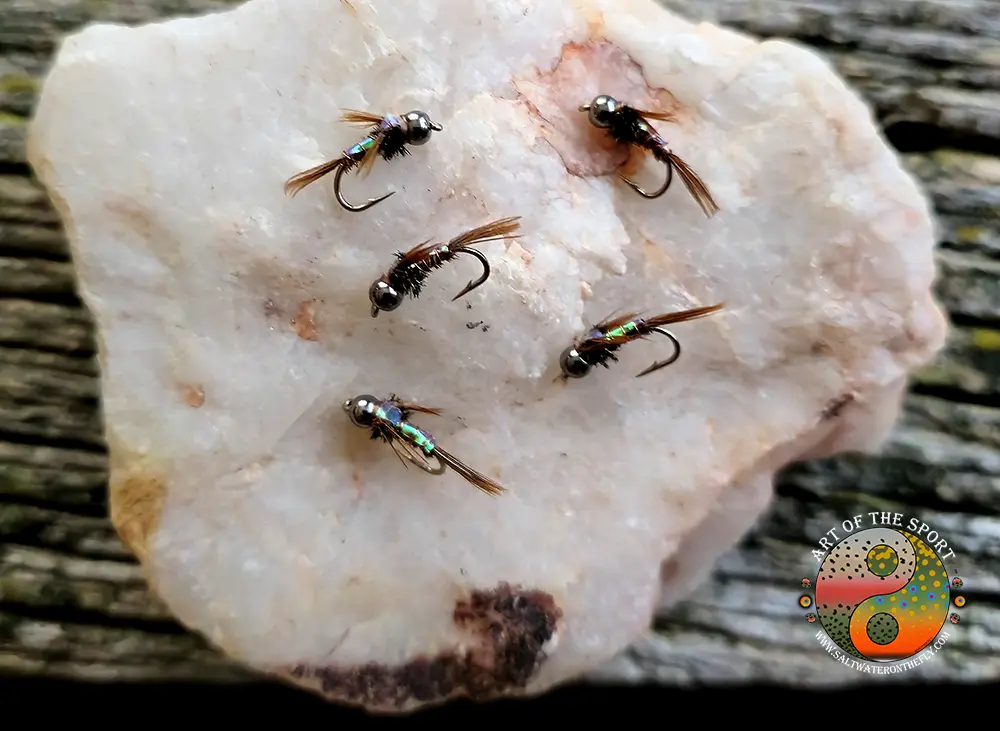
Pheasant Tails are Good Pattern for East Fork Reservoir & Surrounding Lakes and Streams
Hiking Crystal Lake Trail
The Anaconda-Pintler Wilderness has some amazing trails. One great option is the Crystal Lake Trail. It’s perfect if you want a shorter hike. This trail is good for beginners, but it still gives you awesome views.
What to Expect
The Crystal Lake Trail is about 6.5 miles roundtrip. You’ll go up about 1,000 feet in elevation. It’s not too steep, but it’s a good workout. The trail winds through pretty meadows. You’ll see wildflowers in the summer. The main attraction is the lake itself. Crystal Lake is super clear. You can see the mountains reflected in the water. It’s a great place for photos.
What You Might See
- Crystal-clear lake: The lake is the star of the show.
- Scenic meadows: These are great spots to relax.
- Surrounding peaks: The views of the mountains are amazing.
- Wildlife: Keep an eye out for deer and birds. You might get lucky and see something bigger.
Hiking this trail is a great way to spend a morning or afternoon. It is one of the easier Anaconda-Pintler Wilderness hiking trails. The views of the Anaconda-Pintler Wilderness are worth the walk.
Warren Lake Trail
This 8-mile moderate trail leads to Warren Lake, set within the expansive Anaconda-Pintler Wilderness area. It offers breathtaking views. The stunning scenery unfolds as you make your way to this alpine lake.
Koch Creek Trail: Wild Beauty Along a Waterway
This 10-mile trail, with approximately 1,500 feet of elevation gain, follows Koch Creek. It offers opportunities for exploration along the waterway. It has so much to offer to any hiker.
Benchmark Trail: A Test of Endurance
This trail can lead to the summit of Benchmark Mountain. It requires a significant commitment due to its length and elevation. Be prepared with any permits if you’re doing an overnight hik
Hiking Meyer Creek Trail
Meyer Creek Trail is a good choice for a day hike. It is in the Anaconda-Pintler Wilderness. This 10-mile trail gains 1,200 feet of elevation. It’s a moderate hike, so it’s good for most skill levels. You’ll see Meyer Creek, alpine meadows, and great views along the way.
The Anaconda-Pintler Wilderness has a long history. Native American tribes used this land for thousands of years. Tribes like the Shoshone and Nez Perce hunted and gathered here. The area holds many old sites. These include teepee rings and rock art.
Later, explorers and trappers came. The Lewis and Clark Expedition went through this area. Fur trappers also worked here. Settlers and miners arrived with the Mullan Road in the 1860s. Towns like Anaconda and Philipsburg grew because of this.
Mining and Logging:
The Anaconda-Pintler Wilderness saw a lot of mining and logging. This happened in the late 1800s and early 1900s. The Anaconda Copper Mining Company had mines in the wilderness. Logging also became big. Railroads and sawmills were built.
What to Expect on the Trail:
- Distance: 10 miles round trip
- Elevation Gain: 1,200 feet
- Difficulty: Moderate
- Features: Meyer Creek, wildflowers, and mountain views.
Hiking the Meyer Creek Trail gives you great scenery. But, it also connects you to the area’s past. Remember to be ready. Check the weather before you go. Bring plenty of water. Wear good shoes.
Boulder Creek Trail
This 8-mile trail, with 1,000 feet of elevation gain, offers scenic views. Get your backpacks ready for a rewarding hike. It is considered an easier hike for families.
Hiking Murray Lake Trail
The Anaconda-Pintler Wilderness holds some amazing trails. Murray Lake Trail is a great option for a shorter hike. This trail is perfect if you want something scenic but not too tough. It’s about 6 miles round trip.
The elevation gain is around 800 feet. This makes it an easy to moderate hike. Most people find it pretty manageable. You’ll see beautiful meadows along the way. The surrounding peaks add to the stunning views.
Murray Lake Trail offers a taste of what makes this area special. The trail follows Whitetail Creek for a bit. This adds a calming sound to your hike. You might even spot some wildlife. Keep an eye out for deer and various birds.
Here’s what you can expect on the Murray Lake Trail:
- Distance: 6 miles round trip
- Elevation Gain: 800 feet
- Difficulty: Easy to moderate
- Features: Murray Lake, meadows, mountain views, Whitetail Creek
The history of the Anaconda-Pintler Wilderness is also interesting. Native American tribes used this land for a long time. Later, miners and loggers came through. Now, it’s protected for us to enjoy.
Remember to be prepared before you go. Bring water and snacks. Wear good shoes. Check the weather, too. This will help you have a safe and fun time on your Anaconda-Pintler Wilderness hiking trails adventure.
10. Whitetail Creek Trail
This 8-mile hike to Whitetail Creek involves 1,000 feet in elevation. Obtain any necessary permits beforehand. Be prepared and educated before heading out.
The Anaconda-Pintler Wilderness is named after the mountain range and Charles Ellsworth Pintler. He settled in the Big Hole Valley around 1885. This connection highlights the region’s rich history and Montana’s enduring legacy.
Additional Trails in the Anaconda-Pintler Wilderness
While the top 10 trails offer a fantastic introduction to the area, many other trails cater to diverse skill levels and interests. Consider exploring some of these lesser-known gems:
|
|
|||
|---|---|---|---|
| Storm Lake Trail | Moderate | 6 miles | Leads to picturesque Storm Lake, great views |
| Cutaway Pass | Difficult | 12 Miles | Challenging, expansive high-altitude views |
| Twin Lakes Trail | Moderate | 7 Miles | Scenic lakes, suitable for families |
| Edith Lake Trail | Difficult | 14 Miles | Remote lake, challenging climb, for experienced hikers |
| Flower Lake Loop | Moderate | 9 Miles | Flower Lake, good loop option |
| Johnson Lake | Moderate | 8 Miles | Great for fishing, with views of surrounding peaks. |
| Seymour Lake | Easy | 5 Miles | Family-friendly trail. Seymour Lake Campground nearby. |
| Rainbow Mountain Trail | Difficult | 11 Miles | Challenging ascent. The view of Rainbow Lake is at the top. |
| East Fork Trail | Difficult | 13 Miles | This follows a river. The route offers multiple stream crossings. |
Remember to research trail conditions, obtain necessary permits, and practice Leave No Trace principles on any hike you choose. Consider packing extra
The Continental Divide National Scenic Trail
A portion of the Continental Divide National Scenic Trail (CDT) traverses the Anaconda-Pintler Wilderness. This makes it a significant destination for long-distance hiking. The CDT, one of the three Triple Crown Trail, stretches over 3,100 miles from Canada to Mexico.
Thru-hikers and section hikers on the Continental Divide Trail experience the wilderness’s most challenging and rewarding terrain. Goat Peak and Rainbow Mountain offer prime views. The Anaconda Mountain Range is always beautiful.
Planning Your Trip: Essential Information
Before setting out, consider these essential details:
- Access Points: Multiple trailheads provide access, including trailheads near Anaconda, Philipsburg, and Wisdom. Be sure to know where you are going. A map can be very useful for this.
- Permits: While many day hikes don’t require permits, overnight stays and certain activities might. Always check the U.S. Forest Service website. Or a local ranger station is helpful.
- Camping: Designated campsites exist. But, dispersed camping is also allowed, following Leave No Trace guidelines. Make sure you are aware of guidelines before doing dispersed camping.
- Water Sources: Many creeks and lakes provide water, but always filter or treat it before drinking. Never assume the water to be 100% drinkable. Take precautions with the water source.
- Wildlife Includes: Be aware of bears (both black and grizzly), mountain lions, and other wildlife. Practice bear safety, including carrying bear spray. You’ll want to store food properly.
- Trail Conditions: Conditions can change rapidly, especially at higher elevations. Check the weather forecast before you go. Be prepared for snow even in summer.
The Wildlife of the Anaconda-Pintler Wilderness
The wilderness area is home to a diverse array of wildlife. Deer, elk, moose, and mountain goat roam the slopes. Even bighorn sheep can be spotted in certain areas.
The presence of predators like wolves, mountain lions, black bears, and grizzly bears adds to the wilderness character. This makes it important to be cautious. Being aware of wildlife safety measures is critical for a safe experience.
FAQs about History of the Anaconda-Pintler Wilderness and Top 10 Hiking Trails
Are there grizzly bears in the Anaconda Pintler Wilderness?
Yes, grizzly bears inhabit the area. Practice bear safety, including carrying bear spray, making noise, and storing food properly. A pit toilet is available.
What is the most famous hike in the world?
While opinions vary, many consider Spain’s Camino de Santiago a strong contender. Glacier National Park has famous trails. The most famous would be up for debate.
What is the history of hiking?
Hiking dates back to early human history. Its development as a leisure activity gained momentum in the 18th and 19th centuries. Groups like the Alpine Club (founded in 1857) reflect hiking’s growth as recreation.
How to hike safely in Montana?
Carry essentials like a map, compass or GPS, and appropriate clothing. Hike in a group and inform others of your plans. Stay alert to your surroundings and potential hazards, including wildlife.
Conclusion of Anaconda Pintler Wilderness
The History of the Anaconda-Pintler Wilderness and the Top 10 Hiking Trails highlight Montana’s complex relationship with this cherished wilderness area. You can play a vital role in protecting this natural treasure. Enjoy your adventure.
Other Great Montana Destinations nearby is Historic Butte Montana, Copper King of the Rockies. Or Backpack the Bob Marshall Wilderness or a cool float trip on the South Fork of the Flathead River. Have you thought about fly fishing a Livingston Spring Creek, or maybe the Yellowstone River.
